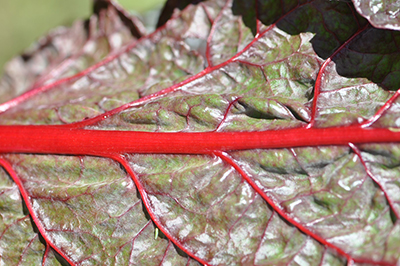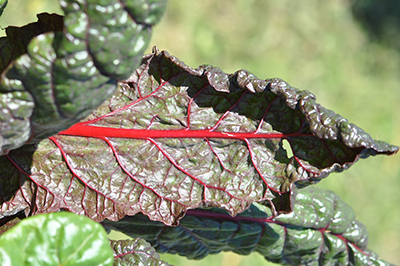Beta vulgaris subsp. vulgaris var. cicla (Chenopodiaceae)


| ENG | Lucullus, Swiss card |
| SK | Mangold, cvikla listová |
| CZ | Mangold |
| PL | Burak liściovy |
| HU | Mángold |
Using
Swiss chard is an important dietary plant. Has more healing properties:
- vitalizes the brain and nerves
- Eliminates nervousness and fatigue, improves concentration
- Eliminates digestive problems and detoxifies the intestines
- Reduces blood lipid levels
- Strengthens the immune system, heart and muscles
- Protects the mucous membranes throughout the body
- Strengthens bones and teeth
- stimulates blood formation and cell oxygenation
- It activates the production of hormones and mental freshness.
| I. | II. | III. | IV. | V. | VI. | VII. | VIII. | IX. | X. | XI. | XII. | |||||||||||||
| Sowing | ||||||||||||||||||||||||
| Harvest | ||||||||||||||||||||||||
Botanical description and occurrence:
Chard is a biennial plant with large dark green leaves. The large, glossy, crisp leaves can grow to 37 cm long and 25 cm wide. The roots are hard and woody. The stalks resemble those of spinach but are fleshy and white or red in color. Swiss chard is a cool season crop that grows best at temperatures ranging from 7 to 24 °C. It can withstand light frosts.
Why to have the plant in your garden:
Chard is vegetable and medicinal plant with high nutritional value. It is growing from direct sowing. Thinning It is important to thin seedlings out to 10 cm apart, not later than 3 (three) weeks after the seedlings have emerged. The leaves are cooked and served like spinach and the petioles can be cooked and served like asparagus. Swiss chard can be harvested after two months when the leaves have reached long 10 and more cm. The leaves must be free of insect injury, worms, mold, decay or other serious injury that affects its appearance.
Text:
Magdaléna Valšíková
Links to scientific articles (if it is possible):
Recipes for Health: Chard". The New York Times. Retrieved January 10, 2015.

